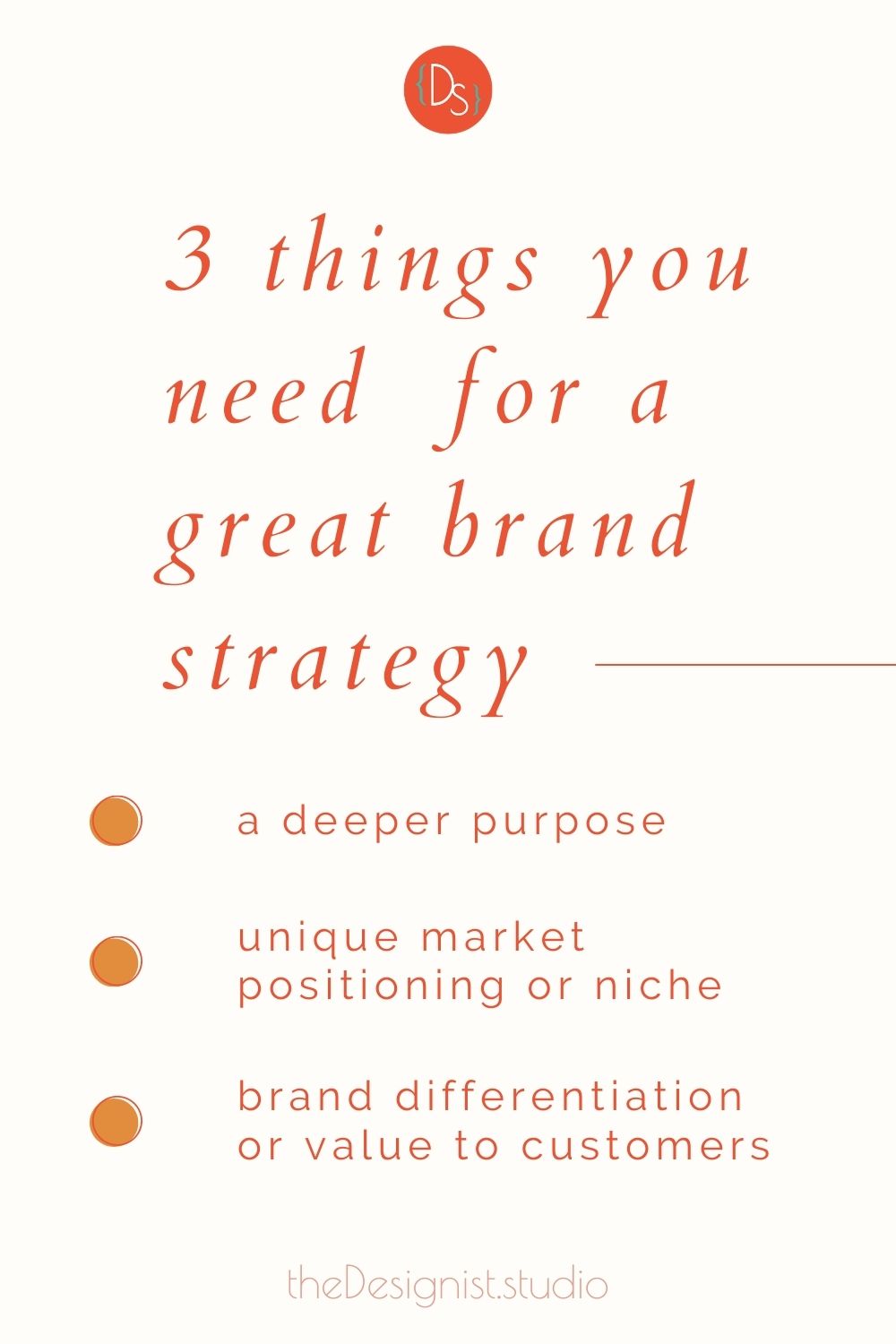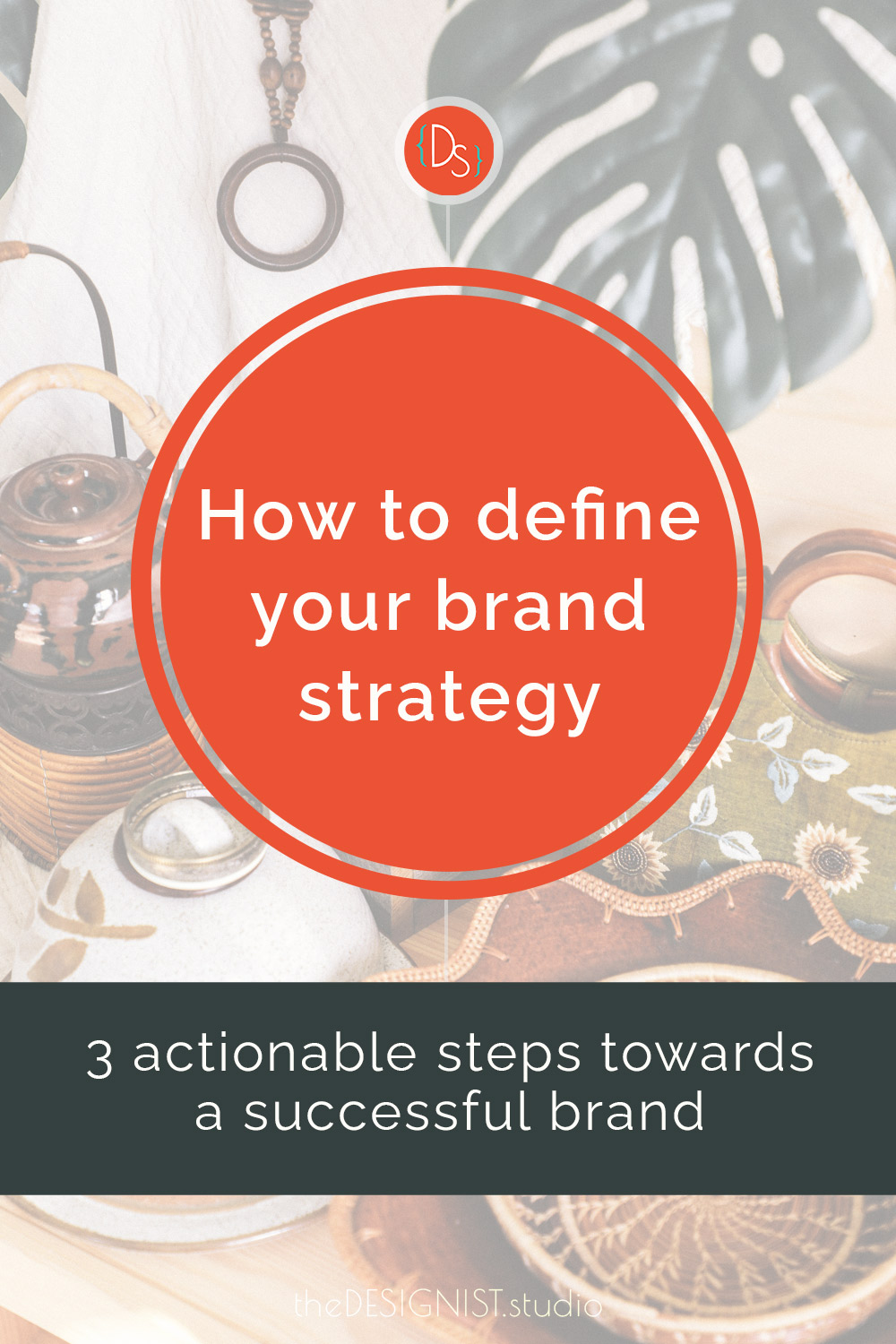3 thoughtful, actionable steps towards a successful brand strategy
Your brand is, simply put, your customers’ perception of who you are. It’s what they think of when they hear your brand name or see your logo.
Brands are built over time. Great brands are built strategically, over time. Do it right, and you build long-term relationships with your customers.
This, of course, means trust in you and your services. When your customers trust you, they’ll keep coming back for more.
What this translates to is that you’ll benefit from a steady increase in leads and sales. Your customers will happily endorse you and provide you with valuable word-of-mouth referrals.
You build your brand over time with a branding strategy. It is how you build awareness of who you are and what you offer. It establishes trust in you, makes you recognizable and memorable, and let’s people know what to expect from your products or services.
Good branding lets your potential clients know why you’re the best choice for their needs.
What I don’t cover in this post
In case it’s not clear: this post isn’t about designing a logo or colour palette. The visual aspects of your brand are, of course, an important part of building your brand.
However, before you go there, you need to define a few things. Whether you’re building your own brand or hiring someone to help you, designing your visual brand identity before you nail down your brand strategy is an error in judgment.
Best case scenario, you’ll come back to it for a redesign later, having wasted time, effort and money on something that doesn’t work. What do you think the worst case scenario is?
While we’re at it, this post is also not about brand marketing, or the ways in which you make your brand more visible.
We’re going to focus on the first, most important stage in the branding process: defining your purpose, positioning, and differentiation.
Side note: If you haven’t developed a business plan yet, I highly encourage you to spend some time on it. Your business plan is a living document that will help you strategize and keep your priorities in check as you try to establish and grow your business.
I bring this up because you should address your brand strategy in your business plan. Feel free to use this post to help you develop that section. Also, check out the resources at the end of this post for a couple of templates you can use to write your business plan.
Now that I have clarified the purpose of this post, let’s get to it!
Find your brand purpose
Start by developing a clear vision of who you are and what you do. It sounds simple, but in truth, it can be surprisingly difficult to nail down.
In defining your brand purpose, consider the values your brand stands for. What are your core values that your audience will identify and connect with? Make it personal, but make sure it’s something you believe your brand can deliver on.
Be specific in defining how your values will shape your business decisions and client experiences.
Simon Sinek said: “People don’t buy what you do, they buy why you do it.” What are the deeper reasons clients will choose to buy from you?
Think about what your mission is, beyond your products or services. Consider what problems you are solving for people. What is the deeper impact you want to have in the world, or at least among your target audience?
Write your brand purpose statement in 1-2 sentences. If you prefer, you can also define it as your mission, vision, and values.
Remember, make sure it’s realistic so you can deliver on your commitment, but also make it a little aspirational so you have a deeper purpose to work towards.
Identify your brand positioning
This step requires identifying your target audience and understanding how you can solve their problems in your unique way.
Start by defining your ideal client. Research your ideal clientele to help you understand their priorities, pain points, and values.
Then, determine how you not only solve their pain points, but express the same values or offer special benefits that your competitors might not. Think about how you make their lives better functionally, but also emotionally.
For example, I offer branding and web design services to busy creative entrepreneurs and small business owners. The added value I bring is unique to me because of my own experience as a small business owner.
I focus on turning a potentially scary and overwhelming process into one that is simple and manageable, which provides both emotional and functional benefits. I’m also dedicated to building and supporting my community, which appeals to entrepreneurs who also share that commitment.
Write a brand positioning statement based on your findings. Keep it between 3-5 sentences long.
Don’t make the mistake of not niching down when defining your target audience. I once worked for a company who, for some reason, made the decision that their target audience was “everyone”.
Thankfully, they made the decision to define their ideal client. After a while, they were able to point to a very specific population as their target audience. It allowed them to make more strategic marketing choices as well as product offerings, and went from losing money to generating serious profits.
Define your brand differentiation
Finally, brand differentiation will help you set yourself apart from your competitors. Naturally, you want to start by researching your competition in relation to your target audience.
Here are a few questions to think about when defining this:
- What does your target audience want that they’re not getting from your competitors?
- What do they want more of?
- What do they want less of?
- What do they think could be improved?
- What can you do better than your competitors?
- What can you offer that is unique to you?
Write a statement defining your unique value proposition (UVP) that describes the benefits of your services. What specifically is so special about working with you that will attract your potential clients?
Avoid generic statements like “I strive for excellence” or “we use a unique process” that mean nothing to your clients.
What next?
Once you have defined your brand purpose, positioning, and differentiation, you will be armed with guidelines that help you make brand-aligned decisions for your business, clients, and any employees or collaborators.
You will also be equipped with the knowledge you need for the next steps to design an impactful brand identity and marketing strategy.
Resources
- 5 steps to define your brand purpose with downloadable worksheet.
- Use this simple SWOT analysis template (right-click and hit “Save link as…”) to help you brainstorm and evaluate your brand. Use one sheet for your own business, and one for each competitor to help define your brand differentiation. SWOT = Strengths, Weaknesses, Opportunities, Threats.
- How to define your ideal client.
- Business plan templates:
- BDC’s free template (Canada)
- Score.org





